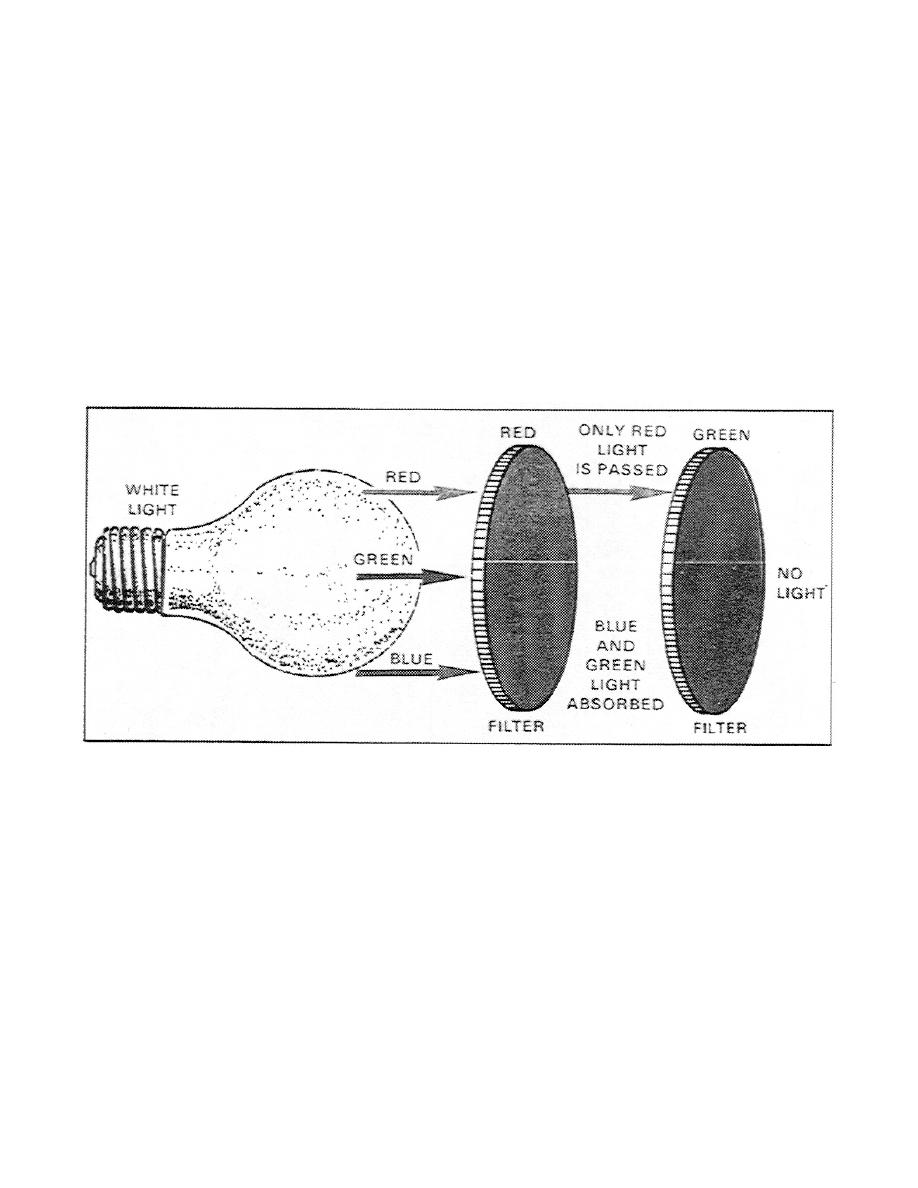
(b) If we examine the effects of primary filters on light, it
becomes evident why it is not feasible to produce color photographs using
the additive system.
The additive system can reproduce reds, greens, and
blues without difficulty.
We encounter difficulties when we attempt to
reproduce colors such as yellow, magenta, or cyan.
To reproduce such
colors, we must combine equal amounts of electromagnetic radiations present
in certain primary colors.
For example, to reproduce yellow, we would
require equal amounts of green and red radiations.
Suppose we want to use the additive system to reproduce a yellow image in a
transparency.
Remember that when viewing a transparency, light penetrates
the emulsion then transmitted to the eye.
The varying amounts of density
present in the emulsion control the intensity of the light striking the eye,
creating the image we see. If we were to superimpose red and green images
in an attempt to produce the necessary combination of wavelengths to make
yellow light, total absorption of the light incident on the emulsion would
occur as shown in figure 1-6.
Figure 1-6.
Effects of additive filtration on a single
light source
The superimposed color images would have the same effect as additive
colored filters.
We know, from previous information, that filters
transmit their color(s) and absorb all others. If the light striking the
surface of the transparency passes through the red image first, only the
red portion of the incident light will be transmitted.
In essence, the
red image will absorb two-thirds of the incident radiation (blue and
green) and transmit one-third. At this point, there is only red light
1-10
SS0514



 Previous Page
Previous Page
